El Panchan - Lost in the Jungle
![]()
The native vegetation of the states of Veracruz and Chiapas was the greenest, most lush and tropical in Mexico; the coastal plains of the isthmus. Large expanses of selva (jungle) remain, interspersed with fields of sugar cane, oil palm groves and small villages.
In Villahermosa, we stopped overnight to visit Parque de la Venta, a delightful patch of selva where we wandered along a path to view and marvel at the great carved rock heads of warriors, arrays of shaped green jadeite stones and carved stone altars that had been made by the Olmec artisans of 4000 years ago, the oldest civilization in Mesoamerica.
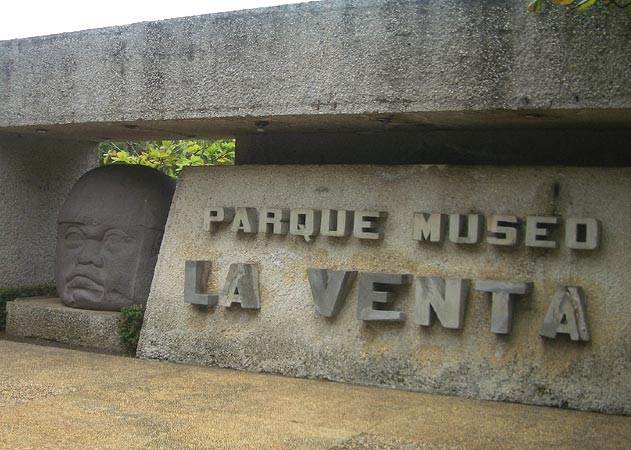
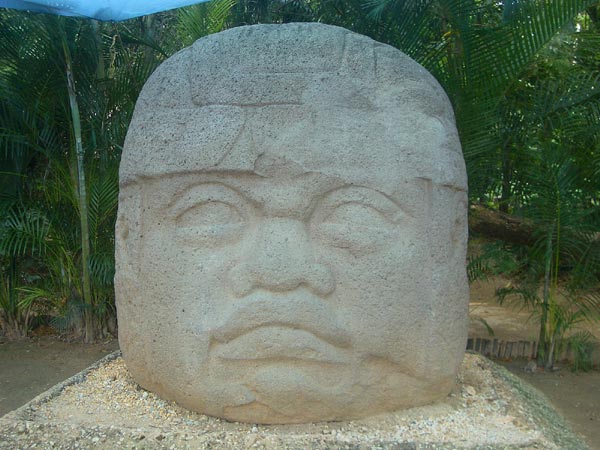
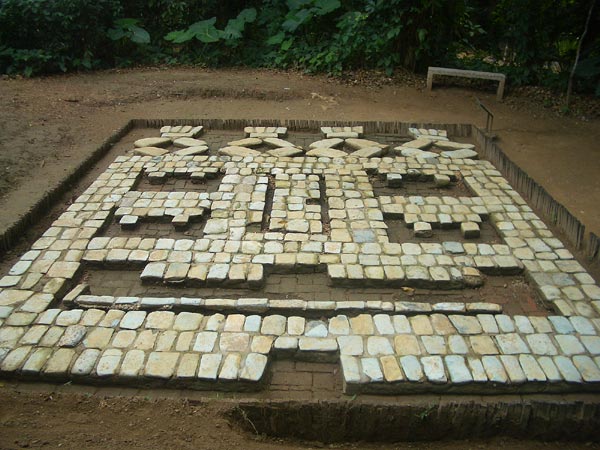
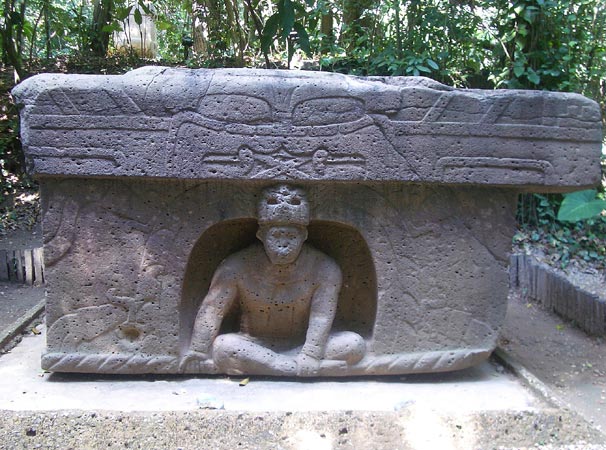
On the bus the next day and now on a secondary road, we passed small groups of people walking or riding horses along the road. In each village, topes (speed bumps) kept traffic at a lethargic pace. We passed through two road blocks where Federales checked selected vehicles, but not our bus. Recalling that 'rebels' still thrived in Chiapas, we were not really surprised at the police presence but we wondered about the nature of the searching.
Soon the bus pulled into Palenque Town, just a few kilometers from Palenque Ruinas. We had decided to stay at El Panchan, a "community" of cabanas and campsites a short ride out of town along the road to the Ruinas. We arrived, checked into Chato's Cabanas and followed our hostess along a path into the selva of soaring, leafy trees and bushes adorned with crimson blooms past cabanas with thatched roofs and screened windows to ours.
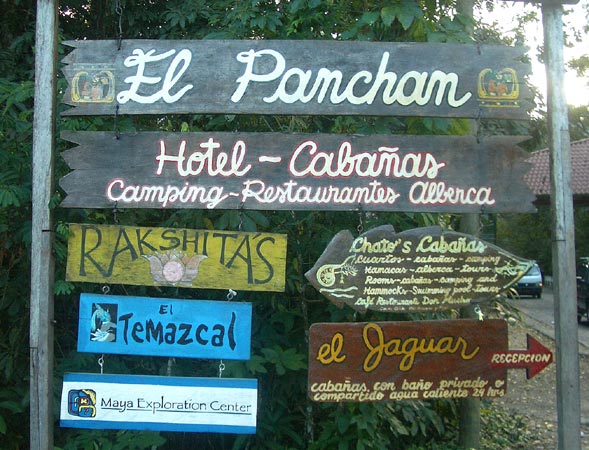
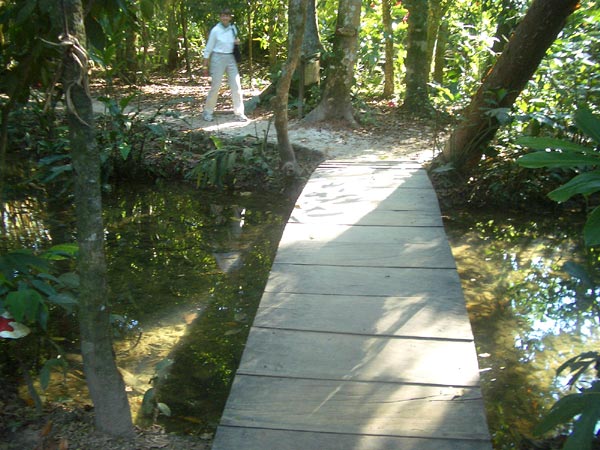
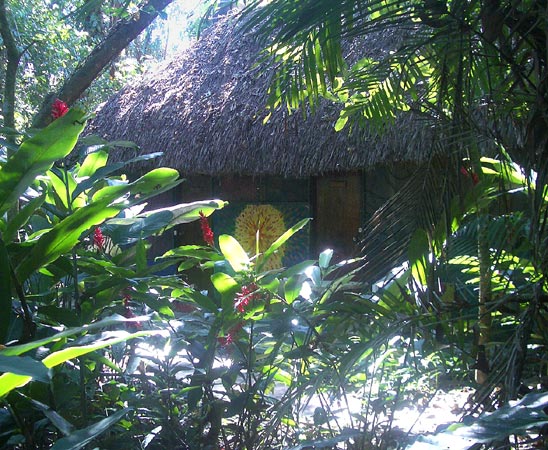
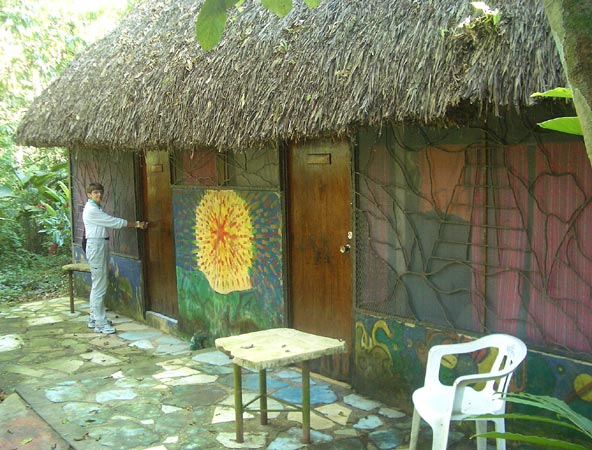
This cozy hut was our casa for the next four nights and we came to delight in the tranquil calm of this rather funky community. We had come to explore the great Mayan city of Palenque but the charm of El Panchan was a gift we had not expected. That first evening, we walked to Don Mucho's, an open air restaurant that offered good Mexican cerveza, real wood fired pizza, and live music by candlelight. That night, the murmurs of the jungle carried us to sleep and the songs of birds roused us the next morning.
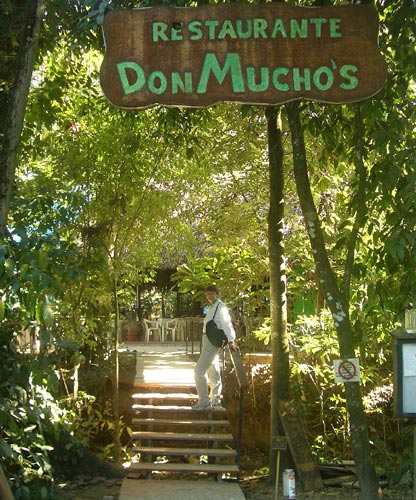
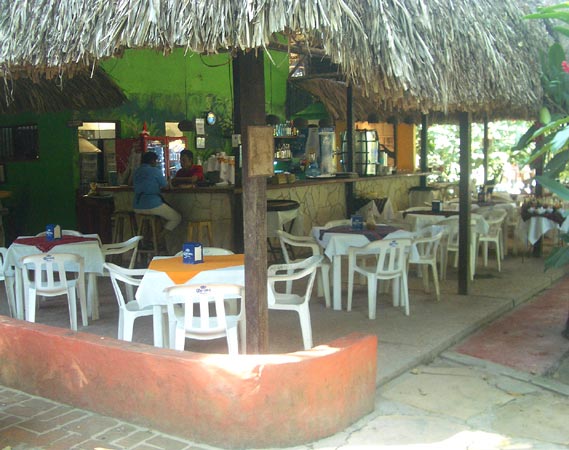
We spent the day exploring the Palenque Ruinas, returning to El Panchan in the late afternoon to relax over cerveza and talk about the rest of this journey through Mayaland, realizing that we were less than enthused about the prospect of a return to the USA. Here in the calm of this tiny place we felt delightfully isolated from the "real" world, immersed in our own lovely, green world with the spirits of Mayans spinning around us and embodied in the local people. After another peaceful night and nice desayuno at the other cafe, Mono Blanco, we met a woman along the path who told us she came to El Panchan for three nights, and that was six years ago! Now she owns a small book store and she invited us to visit.
Intrigued, we followed signs through the jungle back into the area where there were several casas of permanent residents. We easily found Kat's place - her home, garden and the book store in her kitchen! (below left) We sat and chatted for a while learning a bit of local history while enjoying views of the surrounding selve (below right). It seems this property was owned by a man with several children and he challenged them to develop it with minimum impact on the natural environment. They built the collection of cabanas, campsites, cafes and tiny shops, allowed a few residents, mostly scientists studying the ruinas, and herself to live here permanently, and invited visitors to come. Kat revels in the communal safety, the tranquility and sense of isolation from the rest of the world. Yet, she is well read and we talked about the state of the planet at length!
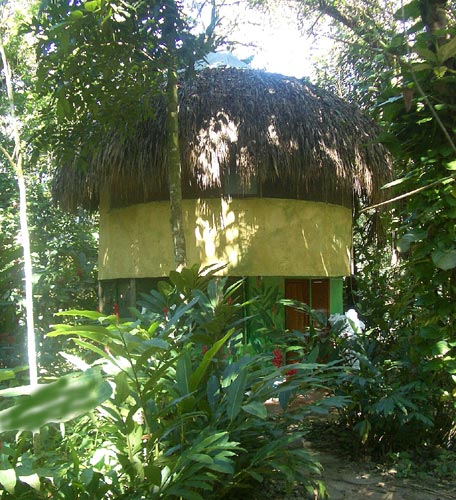
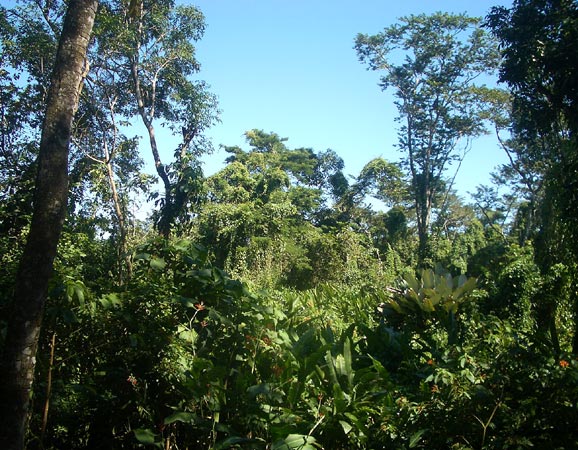
Staying for unplanned extra day enabled us to visit the Palenque Ruinas and Museo once more, to become immersed in Mayan culture, and another evening to experience more of the tranquil life of El Panchan. We had discovered a part of the world that had offered us a time-out from our journey - an experience we had not expected.
Click here to return to Our Moving on to Mexico - Winter 2008-2009 page
![]()